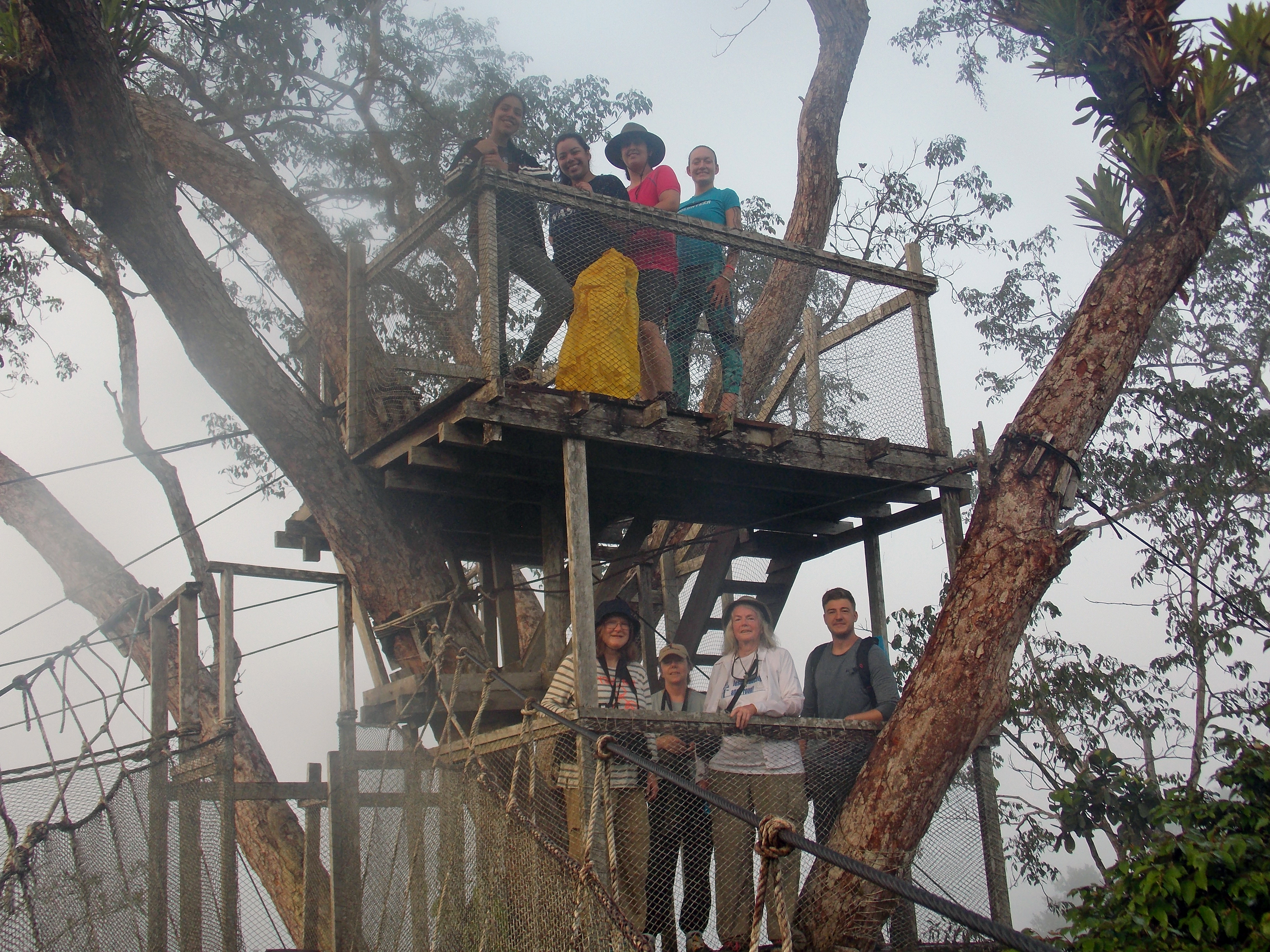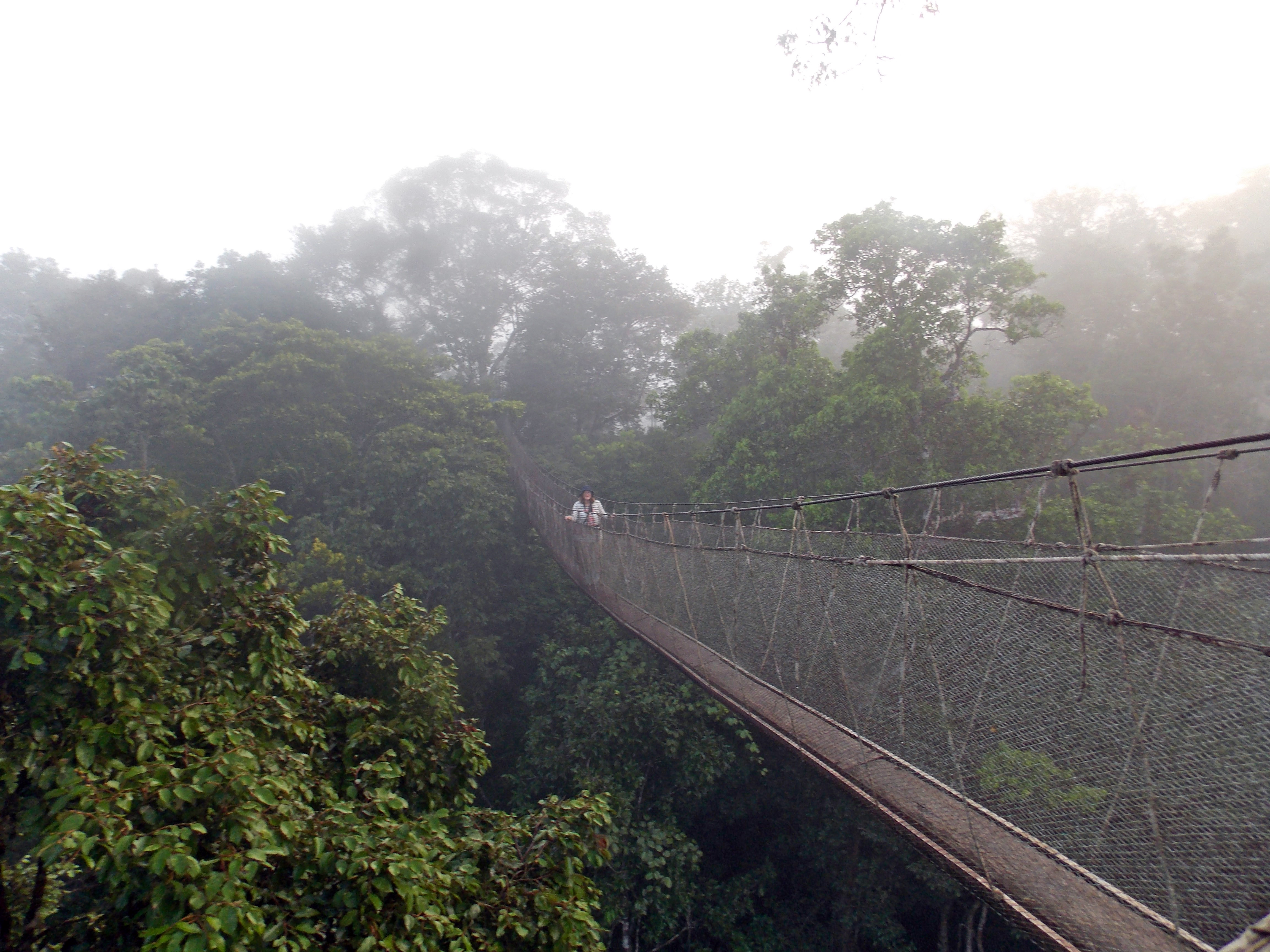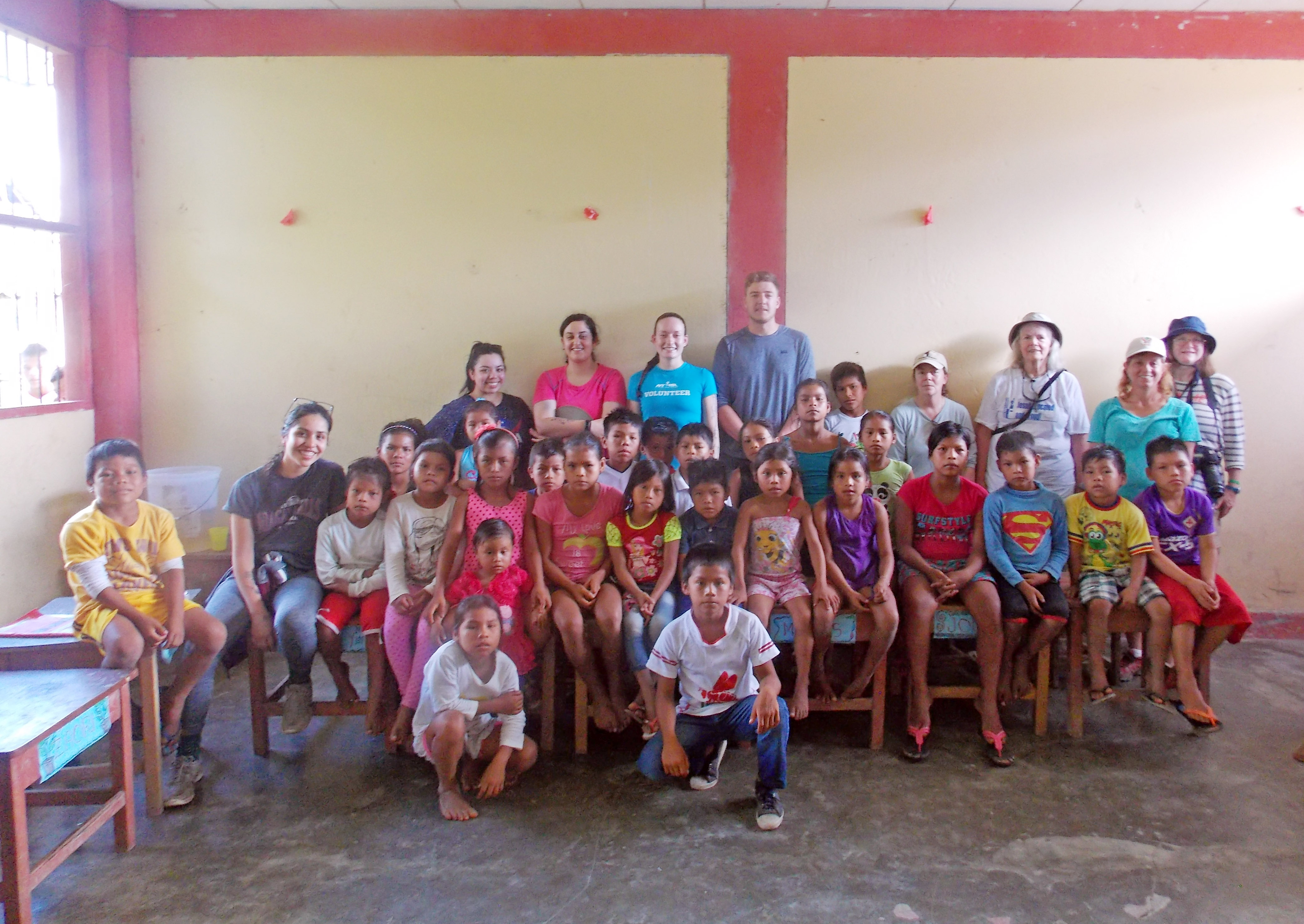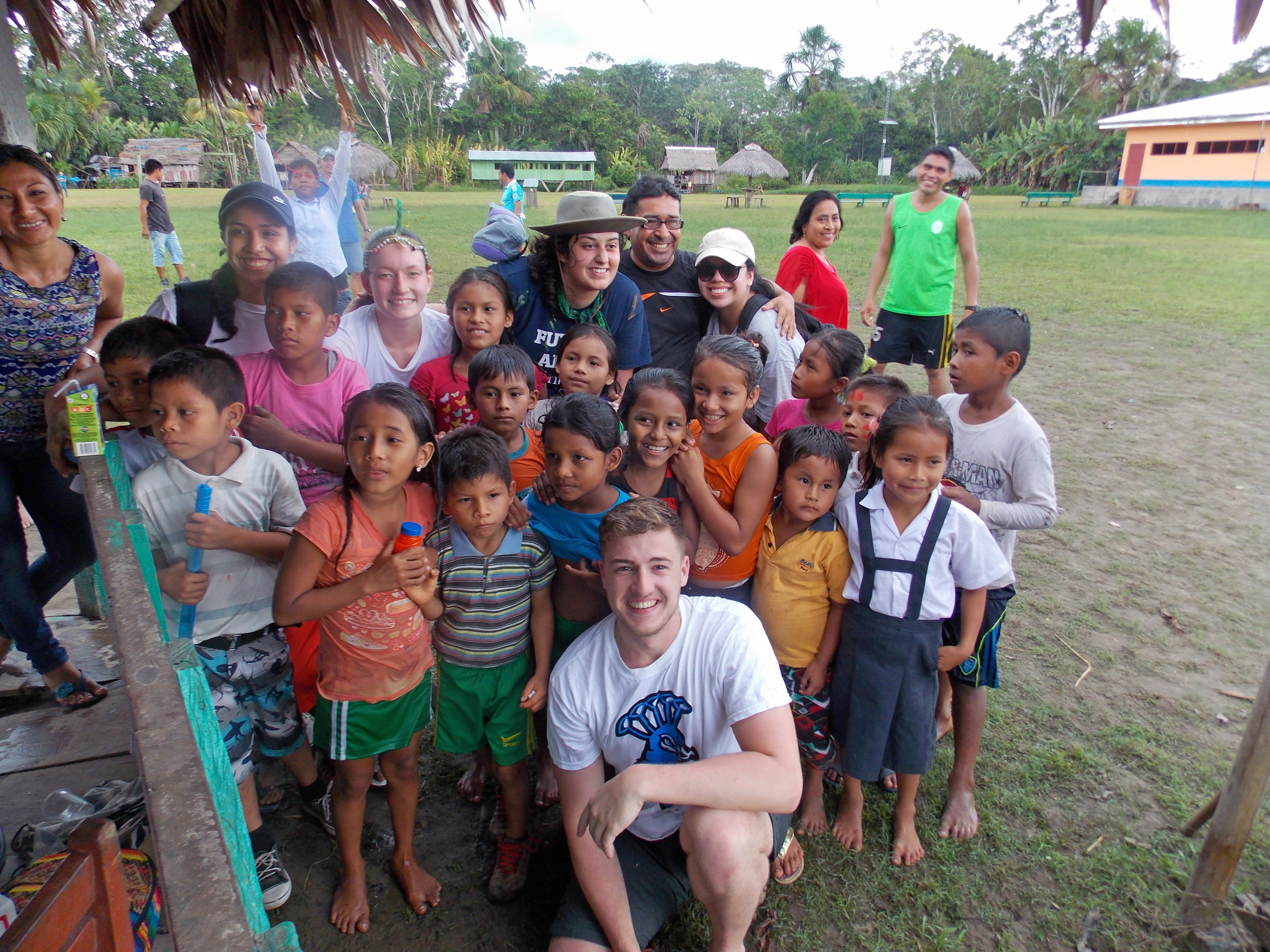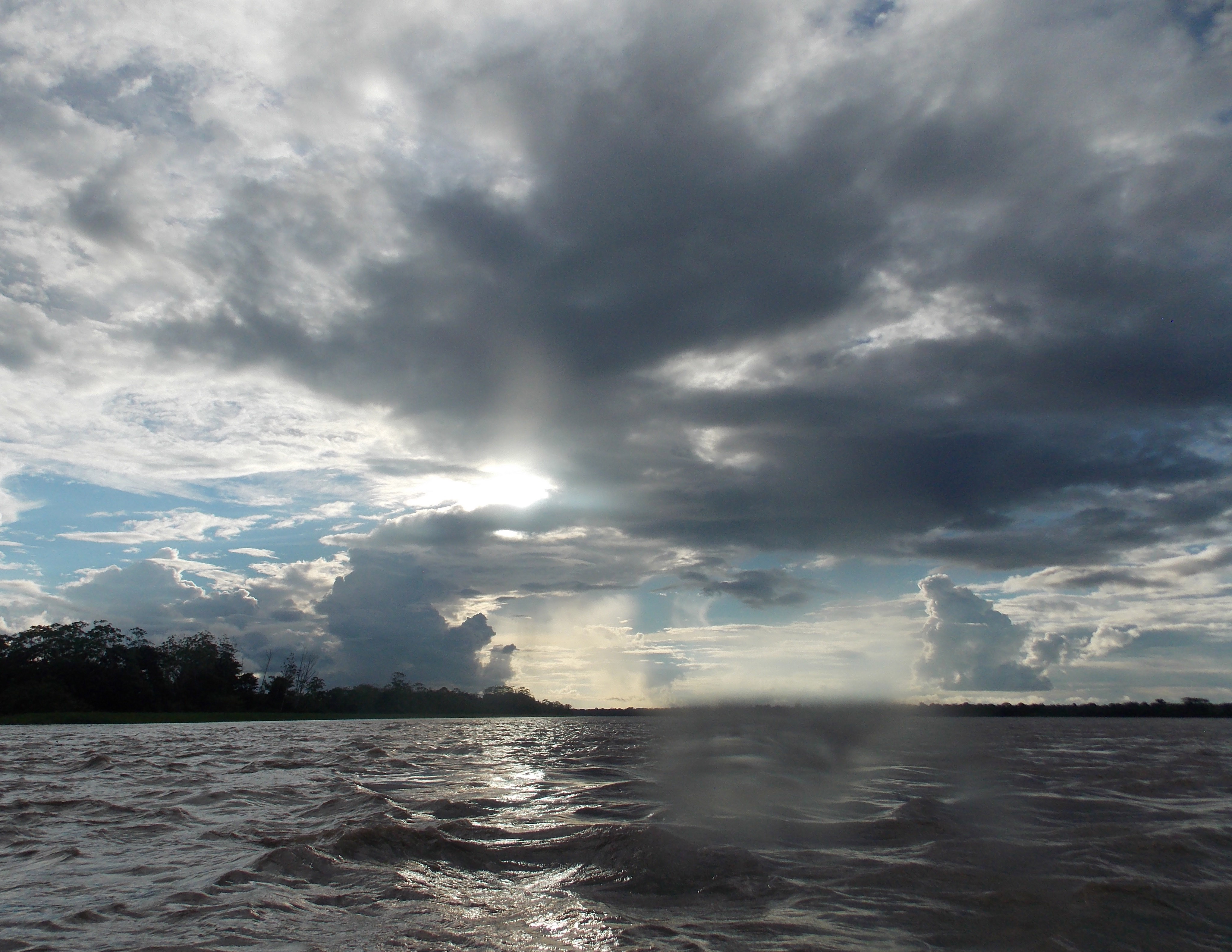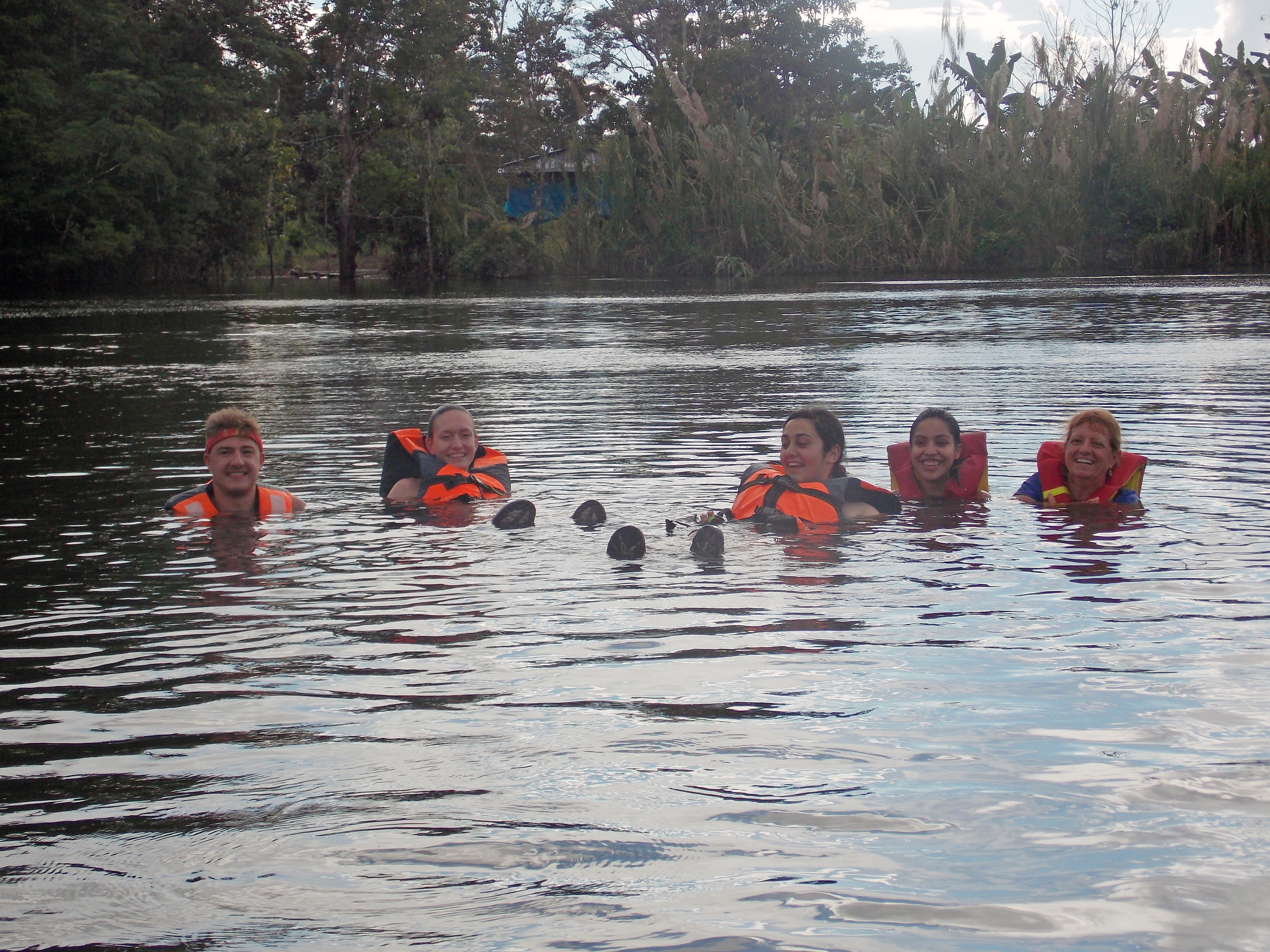The Amazon rainforest in Peru contains 11% of the entire Amazon basin where there are over 250 species of amphibians, 800 species of birds, 7,000 species of plants, 290 species of mammals, 2,500 species of butterflies, 690 species of fish and 180 species of reptiles. The Amazon watershed plays a vital part in regulating weather and precipitation, is a vitally important sink for carbon dioxide in the atmosphere and contains about 20% of the earth’s fresh water. This exotic location served as the classroom for six Saint Peter’s University students, who were on a recent study abroad trip as part of an intro to environmental studies class, led by Patricia Redden, Ph.D. In addition, the class was joined by other global thought leaders, Kathy Wydner, Ph.D., associate professor of biology at Saint Peter’s; Barbara Hillery, Ph.D., chemist and dean of the School of Arts and Sciences at SUNY Old Westbury; and Shyamala Sundara, Ph.D., a research biologist from Washington D.C.
The trip required students to submerge themselves in high-impact learning, as they had to live and explore along the Amazon River. The team traveled to makeshift classrooms accessible from Iquitos only by small boat. From each of the four sites, the class studied the plants, birds, mammals and insects.
At the first stop, Explorama Lodge, the class had the opportunity to meet with an indigenous group, the Yagua, and learn some of the ways they use the forest materials to make items they need in their everyday life. On that excursion, they also visited a clinic that provides medical care for those who live along the river.
A highlight for the group was a unique experience they had studying the pink and gray river dolphins and recording their vocalizations with Marie Trone, Ph.D., professor of biology at Valencia College in Florida. Dr. Trone collects sounds from the dolphins and is trying to interpret their “language.”
Between lodges, the class stayed true to Saint Peter’s Jesuit identity and spent a service day in a local village, painting the school and water tower. When they finished painting, the students played with local school children. They ended the day with a swim in the river and an excursion where they caught their dinner: piranha. In addition, they visited a shaman at the ReNuPeRu Ethnobotanical Garden and learned about traditional medicines.
At the Amazon Conservatory for Tropical Studies (ACTS), they had the opportunity to climb to the top of the rainforest canopy. At the Maijuna Interpretive Center students learned about the history of the area (including the Jesuits who were early visitors), a visit to the local school and then the group traveled back to Ceiba Tops Resort where they returned to air conditioning, hot showers and tablecloths. The tour ended with a visit to the Manatee Rescue Center in Lima before flying home.
In Peru, the students immersed themselves in the local culture; they went without TV, air conditioning, hot showers and running water. However, the students did participate in once-in-a-lifetime extracurricular activities such as early morning bird and sloth watching and close encounters with a baby capybara the size of a pig and a young tapir.
“I worried about how the students would take to all of this, but they were fantastic and had a great time,” said Dr. Redden.
“The Amazon trip was fantastic! We learned so much about the plants and animals of the region and the people who call the rainforest home. The tribes we visited shared their rich history and culture with us and made us feel very welcome. We did so many incredible things, from helping Dr. Marie Trone (of Valencia College) study the river dolphins, to fishing for and eating piranhas to meeting the shaman to getting to see all sorts of cool animals,” said Lauren Chukrallah ’17.
Interested in learning more about studying abroad? Contact Scott Keller, director of the Center for Global Learning, at skeller1@saintpeters.edu or (201) 761-6028. The International Opportunities Fair will be held on Thursday, September 14 from 11:00 a.m. to 1:30 p.m. in The Duncan Family Sky Room. Visit saintpeters.edu/global-learning/students for more information.

